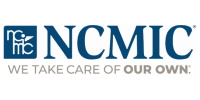Science is hard; good science is more difficult.
When I entered this profession in the late 1970s my naive belief was that since chiropractors were obviously getting people better, all we needed for our ac-ceptance to skyrocket was research showing that chiropractic works.
Flash forward to today. Despite many practice challenges, chiropractic is now far better accepted socially, as well as by other healthcare professionals. It’s been quite a while since I've been called a quack. Last week I went to dinner with six DCs and six MDs- neurosurgeons, neurologists and other NMS docs. The topic of mutual referral underlies many of the conversations, but these collaborations would never have occurred 20 years ago. Plus demand is up, as there’s been a tremendous increase in the problem back pain during the 21st century – a good thing for those treating back pain.
But are chiropractors’ social popularity and success skyrocketing?
Insurance companies continue to tighten the economics of practice as we enter the grand PPACA healthcare system experiment, better known as ObamaCare. Time will tell whether it was bold or foolish, but no one is claiming it is going to fix the growing problem of back pain in an aging, slumped over society.
It seems as though just as physicians and other providers accept us more, the individual practitioner has less ability to steer patients to DCs, because now the MD has become an employee. Medical Homes and other entities with acronyms like ACOs and PCMHs are ascendant, with protocols written by committees of administrators and accountants (as well as some clinicians) who look at the ―scientific evidence.”
And research does show the value of spinal manipulation, but often in less glowing terms than myself and our researchers hoped.
The problem of quantifying back pain
The problem—science is hard. My friends who are scientists continually repeat that the plural of anecdote is not data. They require the use of dimly recalled things from Statistics 101 like chi-square and T tests to determine “statistical significance.” To scientifically and statistically prove something requires showing there is less than one chance in 20 that whatever you are studying happened by chance. Also known as P= <.05, reaching this probability means controlling for all other possible variables.
For back pain, there’s an amazing variance of flavors of patients and their com-plaints. Patient history and the specifics of the problem onset and character is one. Does the pain radiate into the SI joint in the low back only, both SI joints, or going into the buttocks? A really important but often neglected factor is bio-psycho-social, where intertwining of the person's psychological involvement with their pain creates psychological and personal benefits (think more attention or a bigger settlement) and creates a spiral of negative behavior.
The multifactorial nature of back pain is probably the one thing on which all the low back pain research agrees. Regarding spinal manipulation, unfortunately the 200 plus studies currently in the journals don’t fully agree, but new exciting studies are coming out which demonstrate the effectiveness of chiropractic, as well as pointing to a role for the DC in the health delivery system.
Meta-studies draw improved conclusions
A big trend in science is doing a study to look at a number of other studies in a meta-study, which is essentially pooling data to see what works best.
A 2013 study published in
SPINE by Goertz looked at eight of these systematic reviews and reported that, indeed, chiropractic manipulative therapy can moderately reduce low back pain and disability.
The study: “Adding chiropractic manipulative therapy to standard medical care for patients with acute low back pain: Results of a pragmatic randomized comparative effectiveness study.”
The results: “Chiropractic manipulative therapy in conjunction with standard medical care offers a significant advantage for decreasing pain and improving physical functioning when compared with only standard care, for men and women between 18 and 35 years of age with acute LBP” care.
1
In other words, chiropractic makes medical care better.
A possible suggestion for these researchers’ next study: Compare chiropractic plus medical care to chiropractic care alone. Another even more exciting study was just published in the Annals of Internal Medicine. “Spinal Manipulation and Home Exercise With Advice for Subacute and Chronic Back-Related Leg Pain” looked at what happens when you add chiroprac-tic to an exercise and posture advice program already shown to improve low back pain.
Bradford’s team at Northwestern University of Health Science Advice taught ge-neric awareness such as,
“Patients were also instructed in methods for developing spine posture awareness related to their activities of daily living, such as lifting, pushing and pulling, sitting, and getting out of bed.” The study’s result: Adding chiropractic gave even better results than the exercise and advice alone.
2 In both of these studies, researchers controlled for a multifactorial problem by adding chiropractic to something whose effectiveness was already measured. Both studies’ results counter the arguments that back pain is psychological, or that some improvements occur when you teach people exercises and give them postural advice. In other words, posture training helps and placebo effects may be real…but so are the positive changes seen with chiropractic manipulative therapy.
Chiropractic really does help back pain, as does exercise, as does postural advice. And, when it’s all combined, patients do even better!
But practice is not a research environment. In Bronfort’s study, home exercise and advice were delivered in four 1-hour, one-on-one visits during a 12-week intervention. The main program goals were to provide patients with the tools to “manage existing pain, prevent pain recurrences, and facilitate engagement in daily activities.” And while research is fantastic, in the real world chiropractic practice economics defines what can be done. Especially in these days of third party reimbursements, it’s smart to effectively fit programs into sequenced 8-15 minute encounters, program care to be systematically individualized and progressive, and be able to have different staff reliably and reproducibly teach the exercises and posture awareness.
This is why the StrongPosture® exercise protocols and PostureZone® framework is a great way to systematically teach exercise and also communicate with patients, the public and other professionals.
The PosturePractice Model
By first engaging people with a picture from an app (see above image), and then communicating concepts of PostureZone© biomechanics, the message can apply to spine care, as well as people with other neuromuscular skeletal issues including extremity concerns, hip to foot and shoulder to hand. Plus, Baby Boomers concerned about hunching over and athletes seeking performance also value posture. And while not clinical, for many a significant appeal of the PostureZone© framework is vanity’s appeal— people who stand tall with strong posture simply look better.
Once people are interested and engaged with posture awareness, the StrongPosture® exercises use the PostureZone© cueing in an actionable framework to systematically strengthen functional postural balance, alignment and motion in a daily posture exercise habit, individualized to for the patient and applicable to multiple demographics.
These posture concepts are receiving increasing coverage in national and local media. Dynamic Chiropractic’s October 1st front page article covered how posture is the DC-MD bridge, and on the general public side the November 2014 issues of SHAPE as well as RealSimple magazines talked about the benefits of improving posture.
Through the trends of both clinical research and media, it has become clear that people are interested in chiropractic care and how our services can help them to live longer, healthier lives. As we venture into a new era of healthcare practices, it makes sense to position the chiropractic profession into a place of value, both in the eyes of other wellness profes-sionals as well as those of the consumer.
About the Author
Dr. Steven Weiniger is an internationally recognized posture expert who has trained thousands of doctors, thera-pists, trainers, and other health and well-ness professionals to help people stand taller with the StrongPosture® exercise protocols.
Dr. Weiniger literally wrote the book on improving posture, Stand Taller ~ Live Longer: An Anti-Aging Strategy, and his team at BodyZone promotes pos-ture awareness with the free Posture-Zone screening app for iPhone. His articles and expertise on posture, anti-aging, exercise, and practice manage-ment have been featured extensively in professional journals and mainstream media.
1—Goertz, C. M., Long, C. R., Hondras, M. A., Petri, R., Delgado, R., Lawrence, D. J., . . . Meeker, W. C. (2013). Adding chiropractic manipulative therapy to standard medical care for patients with acute low back pain: Results of a pragmatic randomized comparative effectiveness study. Spine, 38(8), 627-34. doi:10.1097/BRS.0b013e31827733e
2—Bronfort, G., Hondras, M. A., Schulz, C. A., Evans, R. L., Long, C. R., & Grimm, R. (2014). Spinal manipulation and home exercise with advice for subacute and chronic back-related leg pain: A trial with adaptive allocation. Annals of Internal Medicine, 161(6), 381-91. doi:10.7326/M14-000




